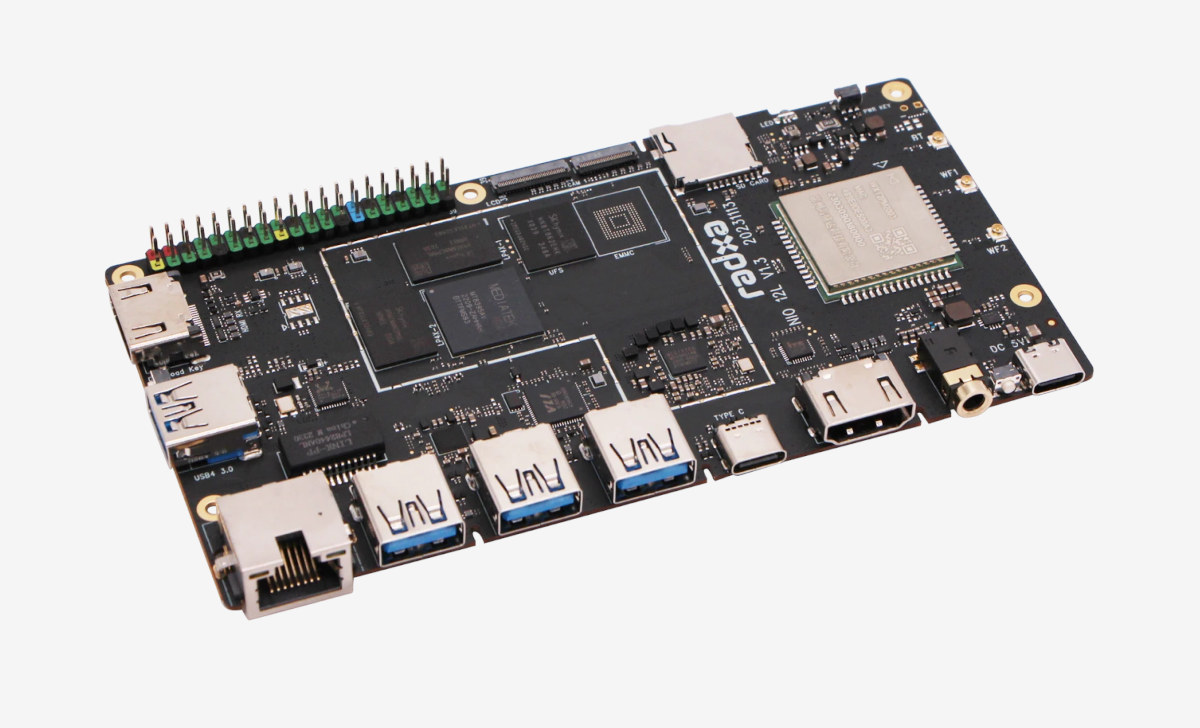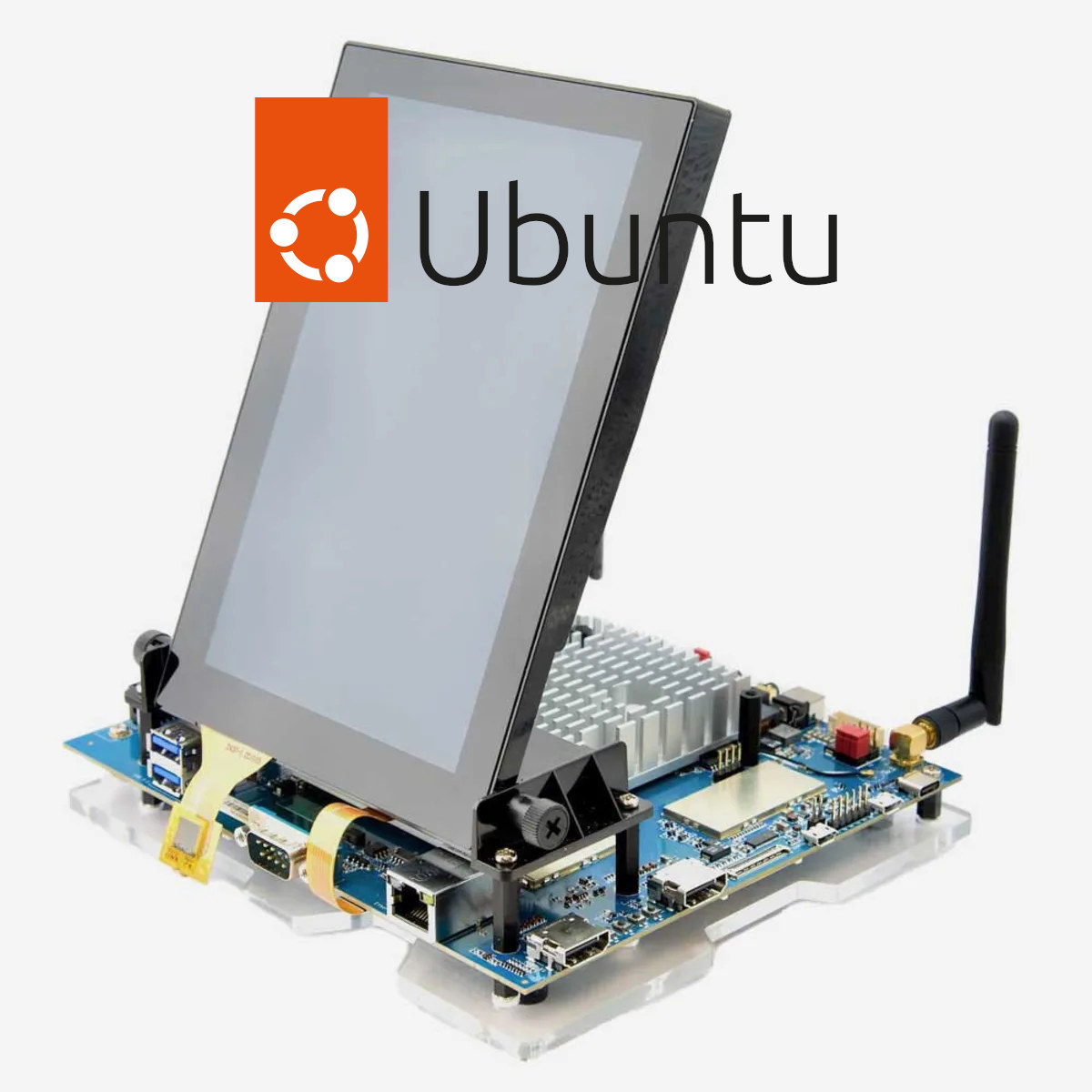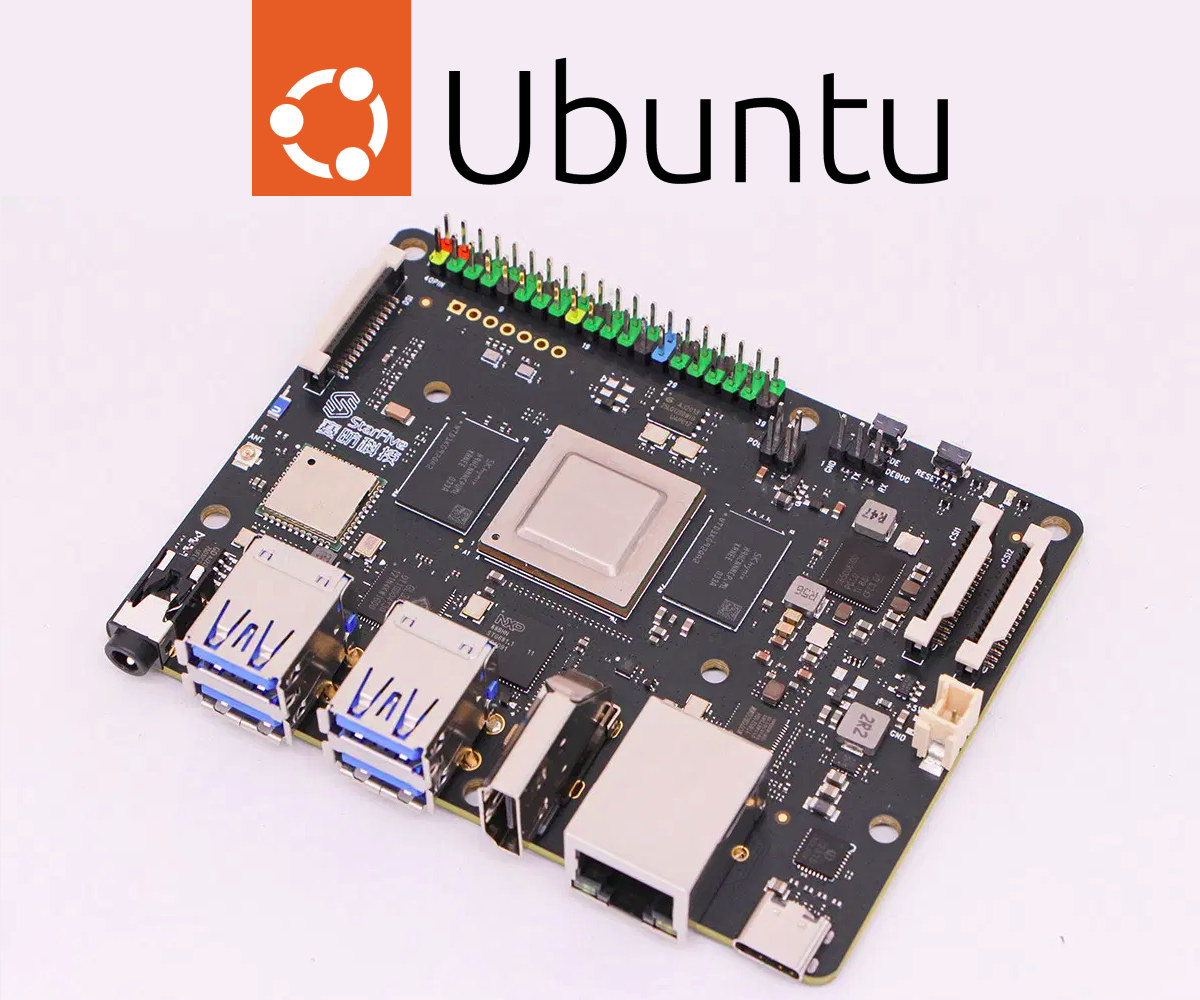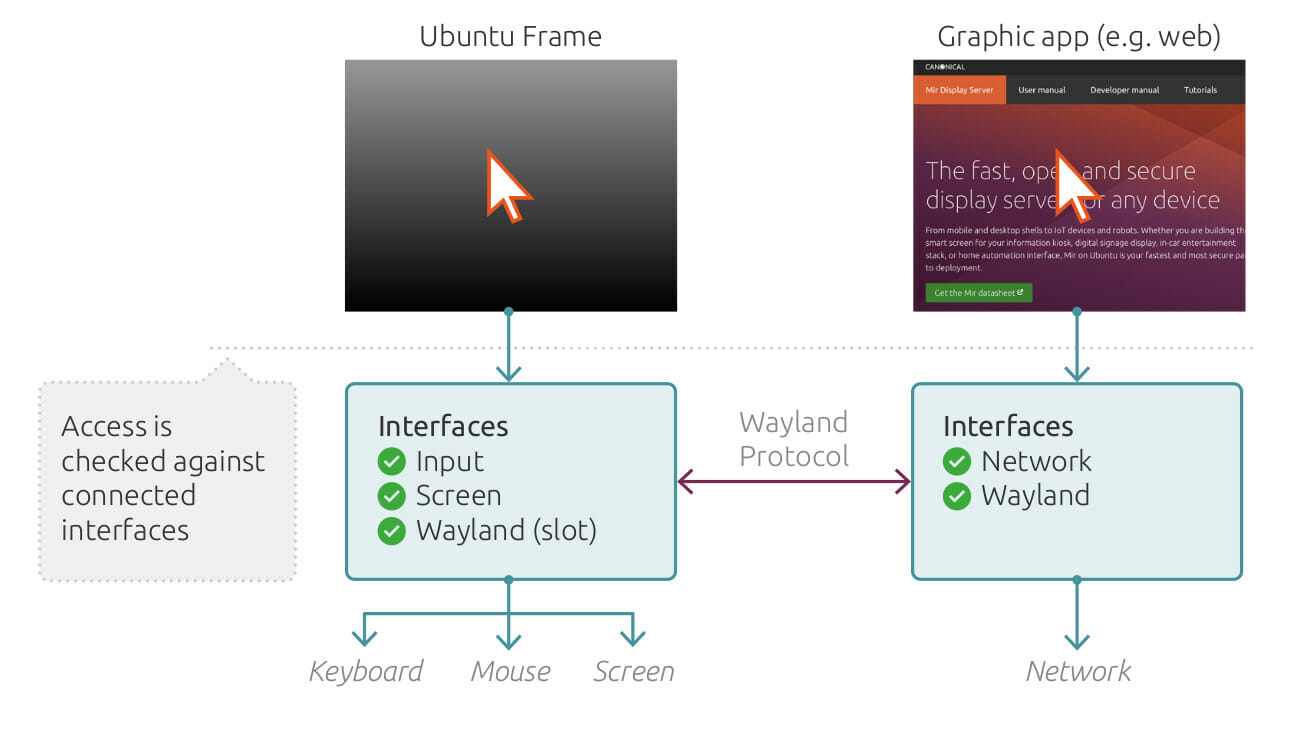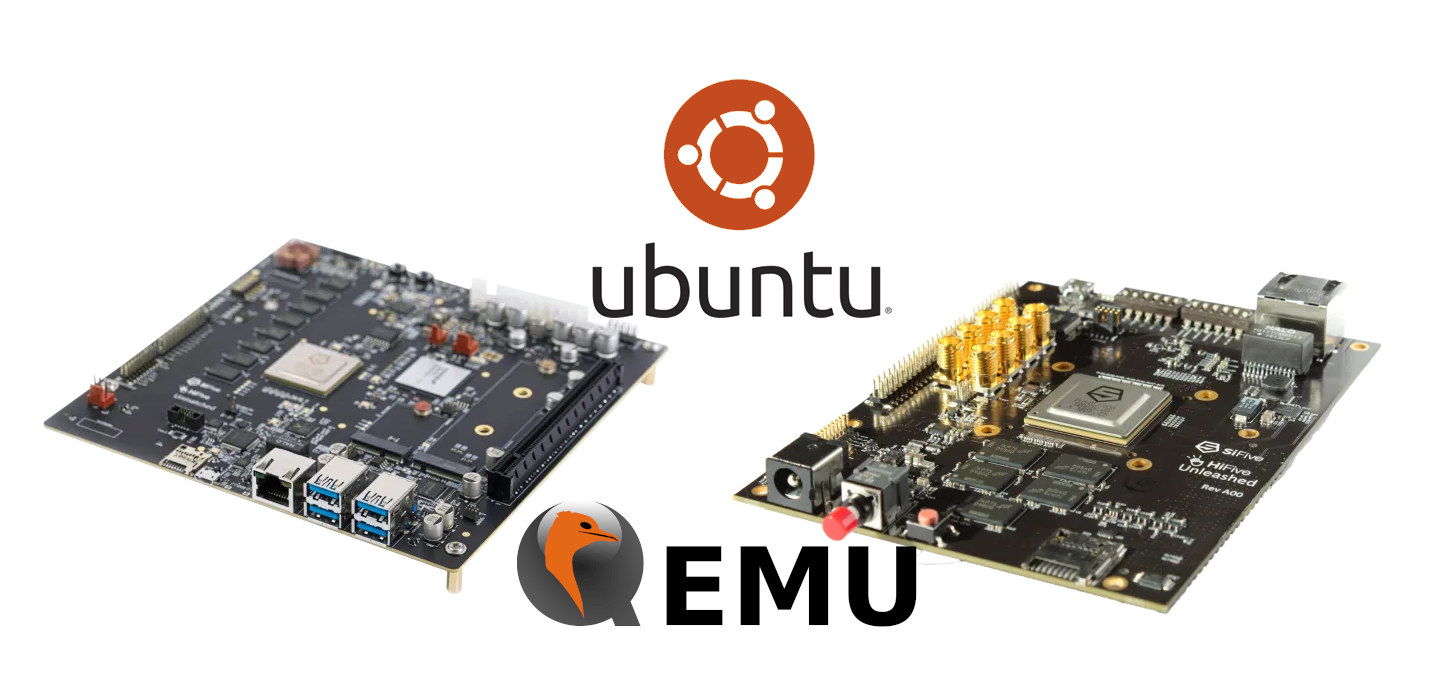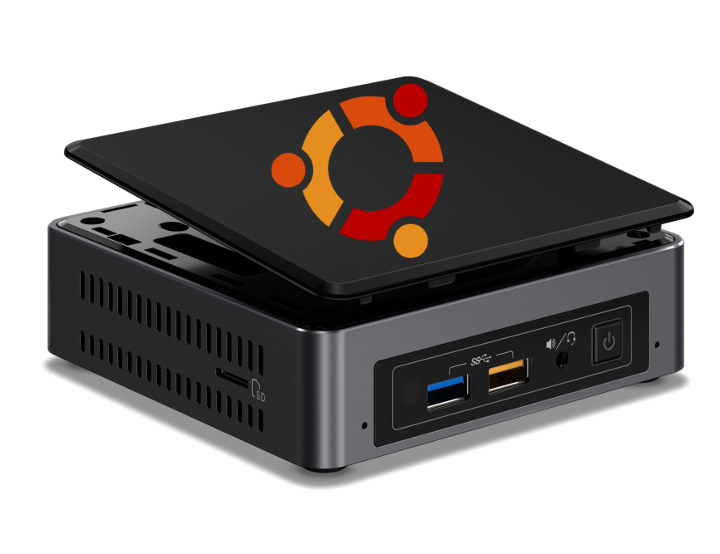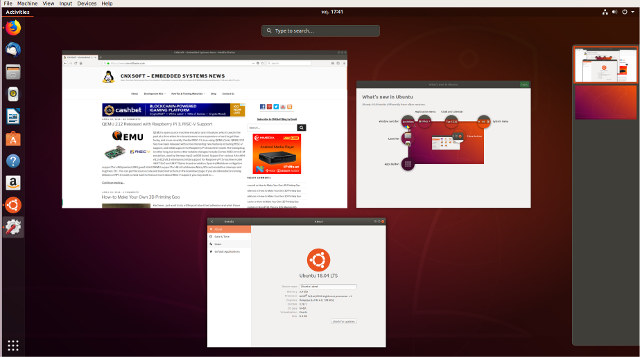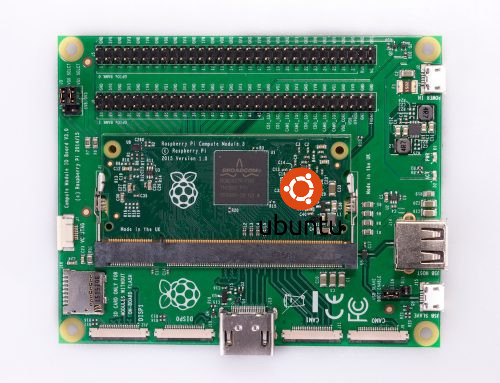Radxa NIO 12L is a low-profile single board computer (SBC) based on the MediaTek Genio 1200 octa-core Cortex-A78/A55 SoC with a 4 TOPS NPU that got Ubuntu certification with at least 5 years of software update, and up to 10 years for extra payment. The board comes with up to 16GB RAM, 512GB UFS storage, HDMI, USB-C (DisplayPort), and MIPI DSI video interfaces, a 4K-capable HDMI input port, two MIPI CSI camera interfaces, gigabit Ethernet and WiFi 6 connectivity, five USB ports, and a 40-pin GPIO header for expansion. Radxa NIO 12L specifications: SoC – Mediatek Genio 1200 (MT8395) CPU Quad-core Arm Cortex-A78 @ up to 2.2 to 2.4GHz Quad-core Arm Cortex-A55 @ up to 2.0GHz GPU Arm Mali-G57 MC5 GPU with support for OpenGL ES1.1, ES2.0, and ES3.2, OpenCL 1.1, 1.2 and 2.2, Vulkan 1.1 and 1.2 2D image acceleration module APU – Dual‑core AI Processor Unit (APU) Cadence […]
MediaTek Genio 1200 Arm Cortex-A78/A55 EVK gets official Ubuntu 22.04 support
Canonical and MediaTek announced optimized Ubuntu images for the Genio 1200 EVK during Embedded Word 2023 last March, but at the time, I could not find any images for download, and there was just an invitation to come check out Ubuntu Core running on the MediaTek Genio platform at the event. But things have progressed well, and Canonical has now announced the availability of Ubuntu 22.04 Desktop and Server for not only the high-end Genio 1200 EVK, but also the mid-range Genio 700 EVK, and the entry-level Genio 350 EVK. That should be good news, as when I tested the i-Pi SMARC 1200 devkit earlier this year (June 2023), the Genio 1200 Arm Cortex-A78/A55 processor (aka MediaTek MT8195) showed really good performance in benchmarks, but at the time, the only option was to use a Yocto image, which is great, but there were still some unresolved software issues and the […]
StarFive VisionFive V1 RISC-V SBC gets Ubuntu 22.04.1 Server image from Canonical
Canonical has been working on RISC-V support for Ubuntu for a while and released Ubuntu 20.04/21.04 64-bit RISC-V images for QEMU and HiFive boards last year. Now the company has released an Ubuntu 22.04.1 Server image for the StarFive VisionFive V1 RISC-V single board computer. While that’s a good development, The VisionFive V1, and other RISC-V platforms, are nowhere close to being Ubuntu-certified hardware, and Canonical posted a note reading “It is an early RISC-V developer access through Ubuntu 22.04.1.” The VisionFive V1 SBC is a pretty good platform for development with a StarFive JH7100 dual-core RISC-V processor, 8GB RAM, Gigabit Ethernet and WiFi connectivity, HDMI output, and four USB 3.0 ports, plus GPIOS headers, and MIPI CSI and DSI connectors. It offers a good middle ground between the high-end (and relatively expensive) HiFive Unmatched mini-ITX motherboard and the low-end Allwinner Nezha single board computer both of which can also […]
Ubuntu Frame is a secure display server for embedded systems
Canonical has announced and released the Ubuntu Frame display server for embedded systems such as interactive kiosks, digital signage solutions, or any other embedded devices with a graphical output. The solution aims to allow developers to build and deploy graphical applications more easily and quickly, as Ubuntu Frame requires less code since, as Canonical explains, there’s no need to integrate and maintain partial solutions such as DRM, KMS, input protocols, or security policies. Ubuntu Frame fullscreen shell is based on Wayland, requires snaps support, and offers compatibility with existing graphical toolkits such as Flutter, Qt5/6, GTK3/4, Electron, and SDL2, as well as support for web-based graphical applications written with HTML5 and/or Java. Besides the ease of development, the other main reason to use Canonical new display server is security: Ubuntu Frame adopts Wayland for a modern and secure approach to graphics. Thanks to Ubuntu Frame’s own secure socket, applications can […]
Ubuntu 20.04/21.04 64-bit RISC-V released for QEMU, HiFive boards
Let’s a lot of excitement around RISC-V open architecture, but a lot of work still needs to be done to bring the ecosystem to level with Arm or x86 architecture from the silicon to the software. Progress is made step-by-step and one of these steps is Canonical released Ubuntu 64-bit RISC-V (RISCV64) images for some of SiFive HiFive boards, as well as QEMU open-source emulator. Specifically, Canonical released an Ubuntu 20.04.2 LTS image for HiFive Unleashed & QEMU, and an Ubuntu 21.04 image for HiFive Unleashed, HiFive Unmatched, and QEMU. Note those are only server images, and there’s no desktop image yet like for Ubuntu 21.04 on Raspberry Pi 2/3/4. It’s been possible to run RISC-V Linux in QEMU for at least three years, but when I tried it was a minimal system based on Busybox, so let’s try again with Ubuntu 21.04 following the instructions provided on Discourse. I […]
Canonical Releases Ubuntu 16.04 LTS Certified for Intel NUC
In the x86 world, the theory is that you can take a single Linux distro image should work on any x86 compatible hardware. But for Atom-class processors however, including Bay Trail, Cherry Trail, Apollo Lake and Gemini Lake it has not always been the case, especially with features like audio output, Bluetooth, touchpad, and others. That’s why for example, Linuxium (Ian Morrison) decided to write isorepin.sh script in order to respin Ubuntu ISO images for such platforms and fix various issues. However, it appears Canonical and Intel have decided to take matters into their own hand, and have now released Ubuntu 16.04 LTS certified for Intel NUC mini PCs, kits, and boards for IoT deployment. Canonical made available both Ubuntu Desktop and Ubuntu Core images. Most supported devices are based on Intel 7th generation Intel Core processors: NUC7i5DNKPC Mini PC with Intel Core i5-7300U NUC7i3DNKTC Mini PC with Intel Core […]
Ubuntu 18.04 Released – What’s New?
Canonical should release Ubuntu 18.04 “Bionic Beaver” long term support distribution later today. One of the most obvious change compared to Ubuntu 16.04 is the switch from Unity to GNOME 3.28 resulting in a fairly different user interface, although the company tried to keep the look-and-feel are close of the Unity version as possible. There are still some differences such as the dash now appearing on the top center of the screen. Eventually, Ubuntu 18.04 Desktop ISO file will be found on Ubuntu website, but in the meantime, I could update an Ubuntu 17.10 virtual machine to Ubuntu 18.04 using the following commands:
|
1 2 3 |
sudo apt update sudo apt dist-upgrade sudo do-release-upgrade -d |
I’ll update my main machine a little later, maybe after the dot release in July, and my server after that, just in case some bugs have gone unnoticed. You’ll be greeted with a “What’s new in Ubuntu” window after upgrade showing the main part of the […]
Canonical Releases Ubuntu Core 16 for Raspberry Pi 3 Compute Module
Now that Canonical has refocused its development efforts on Cloud and IoT, Ubuntu Core has become even more important for the company, which has just released Ubuntu Core 16 for the Raspberry Pi 3 Compute Module, which is better suited for industrial projects than Raspberry Pi boards, for example thanks to the more resilient built-in storage of CM3 module. Ubuntu Core was already supported on Raspberry Pi 2 & 3, Intel Joule, DragonBoard 410c, Intel NUC, and Samsung Artik boards, as well as KVM to run Ubuntu Core in a virtual environment. One of the advantages of running Ubuntu Core is the availability of snaps and branded app stores, making it easy to provide updates, and promote app for the platform. Screenly is one commercial project that will take advantage of Ubuntu Core on CM3 module for their digital signage applications. You’ll find instructions to get started with Ubuntu Core […]


